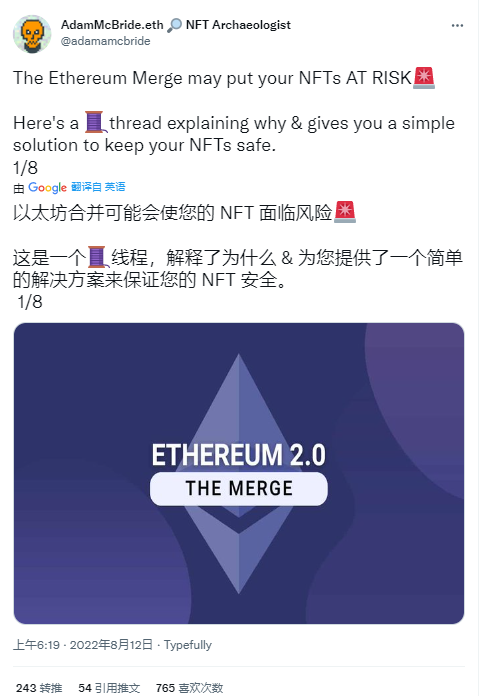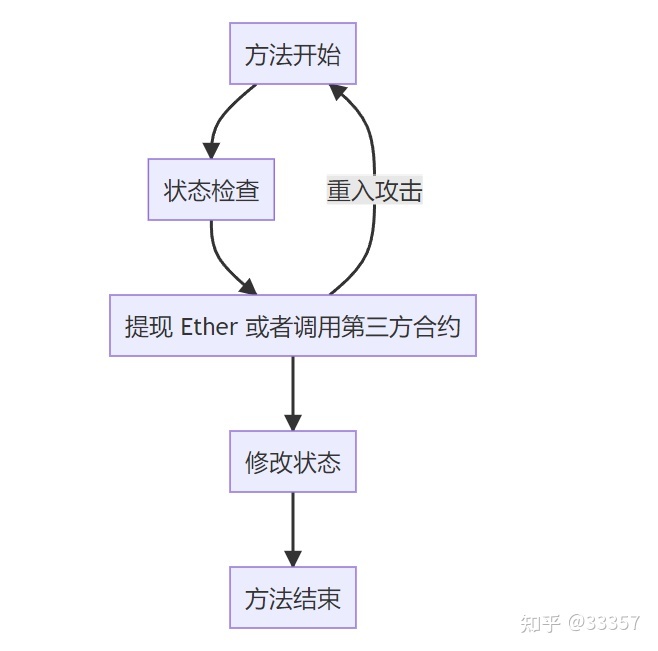If Ethereum forks, will NFT also "fork"?
The process of converting Ethereum PoS to PoW will touch the interests of miners, and the merger date is approaching, and there are many topics about forks in the community. One topic has attracted the attention of Odaily, that is: Ethereum forks may lead to heavy Intrusion attacks put users at risk of losing NFT.

The tweeter in the picture above reminded that if the user does nothing, his NFT may be lost due to a replay attack. In this regard, there are also different voices below the comment area, such as users doing nothing, but can protect their own assets.
secondary title
Reentrancy Attacks and EIP-155
Let's review two knowledge points first, one is re-entry attack and the other is EIP-155.
In the blockchain, re-entry attacks specifically refer to the fact that during the hard fork of the network, the transaction signed by the user on the original chain can be copied by himself or others without permission on other forked chains to obtain more assets .

For example, Xiao Ming has several CryptoPunks on a certain PoW chain. After the PoW chain forks into a PoS chain, Xiao Ming will have the same number of CryptoPunks on the two chains. At this time, Xiao Ming signed a transaction of selling several CryptoPunks on the PoW chain. In theory, this transaction can be copied again on the B chain without Xiao Ming's permission. If Xiao Ming copied this transaction by himself, Xiao Ming would get an extra profit from selling NFT (also cheated the buyer by "additional issuance" in disguise); if this transaction was copied by others, Xiao Ming would lose in vain Assets on the PoS chain.
secondary title

Who will protect users? How can users protect themselves?
After understanding the principle of reentrancy attack and EIP-155, we have made it clear what we should do if a fork occurs after the merger of Ethereum.
First of all, we need to collect a piece of information. Does the Ethereum fork chain follow the EIP-155 protocol?
If the forked chain follows the EIP-155 protocol (depending on the code changes made by the forked leader), then the user's transactions on different blockchains cannot be copied.The user does not need to do anything。
If the forked chain does not follow the EIP-155 protocol (not too particular), then re-entry attacks are feasible, and any transaction signed by the user may be copied on other forked chains. if youHope to maximize the benefits, every time you make a transaction, copy it on other chains (preferably through automated contracts); if you choose to embrace (genuine) Ethereum, do not sign any transactions on the forked chain.



